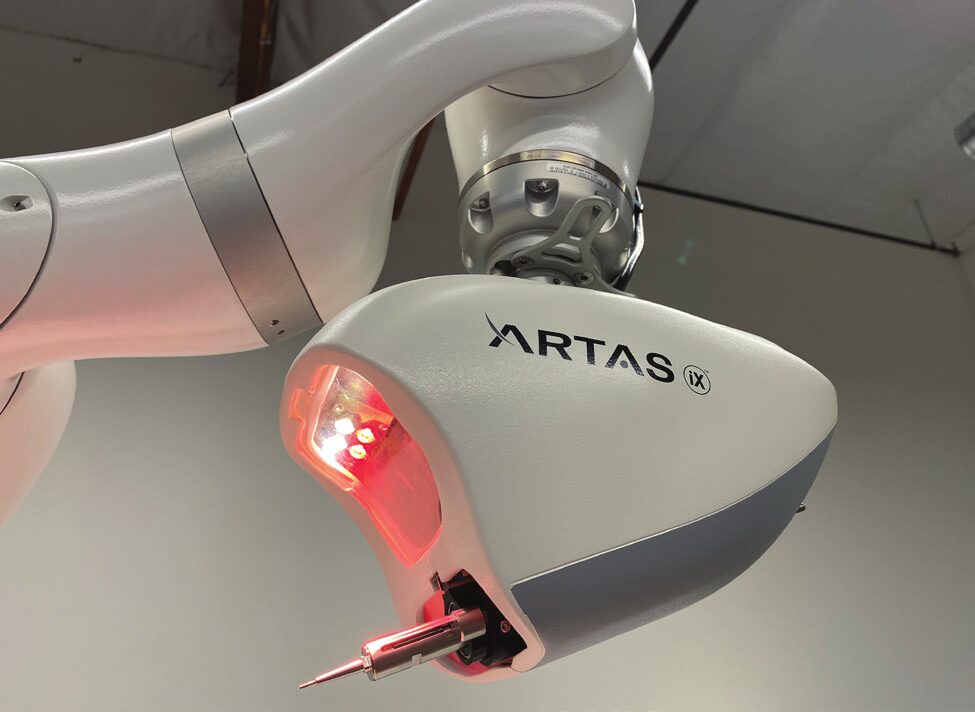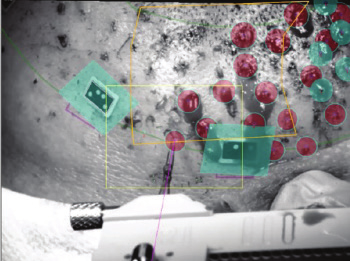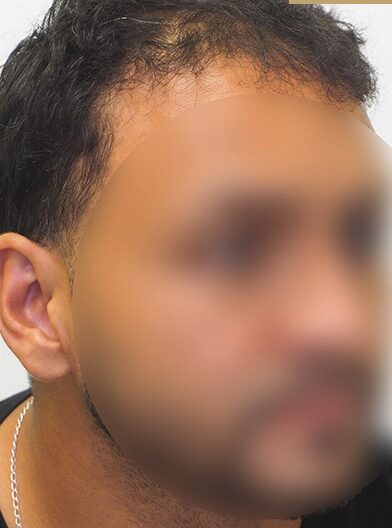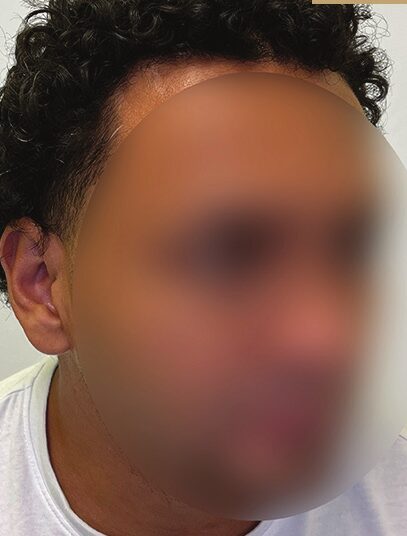Hair Restoration Near Aurora, CO
At Resplendent Aesthetics, serving Aurora, CO, we are revolutionizing the field of hair transplant and hair restoration. Our experienced team is here to support you on your journey to regaining confidence and a fuller, natural head of hair. Our innovative approach ensures a seamless blend of artistry and science, offering unparalleled results in hair restoration.
Why Choose Hair Transplantation?
Hair loss can be a distressing experience, impacting not only your appearance but also your overall self-esteem. A hair transplant offers a permanent solution, restoring not just your hair, but also your confidence and zest for life. By opting for a professional service like ours, you benefit from precise techniques that ensure the most natural outcome, tailored specifically to your needs and lifestyle.
Committed to customer satisfaction and driven by passion, our team of licensed and certified technicians is at the forefront of hair restoration technologies. We pride ourselves on our dedication to constant improvement and inclusivity, ensuring that every client feels welcomed and valued. Utilizing the most advanced procedures, we perform hair transplants with minimal downtime, allowing you to return to your daily routine swiftly.
When you choose Resplendent Aesthetics, you choose a promise of excellence. Our laser technicians and aestheticians bring a wealth of knowledge and extensive experience to each procedure. We understand the intricacies involved in hair restoration and are committed to delivering results that exceed expectations. Our goal is to not only meet your aesthetic desires but also uplift your spirit, making you feel confident and empowered.
Join us at Resplendent Aesthetics and take the first step towards rejuvenating your look and enhancing your confidence. Whether you’re seeking our expert advice or ready to make a change, our team is here to guide and support you every step of the way. Contact us today to schedule a consultation and discover how our goal-oriented and innovative hair transplant solutions can transform your life for the better.
INTRODUCTION
Modern hair transplantation has evolved from Punch Hair Transplantation into more advanced treatment options. Currently, the most common hair restoration techniques for commercial use are Follicular Unit Transplantation (FUT) and Follicular Unit Excision (FUE).FUT is an invasive surgical procedure where a long strip of scalp with hair follicles is excised in order to get donor hair grafts or follicular units. A scalpel is used to cut and remove a part of the skin, while stapling and suturing are used for closure. In contrast, FUE utilizes small punches to detach demarcated hair grafts (follicular units) from the scalp. FUE requires hair grafts to be harvested individually in a two-step method – sharp punch placed into the scalp and forceps to manually separate grafts—which can be very laborious and tedious due to volumes of up to 2000 to 3000 grafts that need to be sorted and handled very carefully to avoid damaging donor hair. FUE is also not a straightforward procedure, because there is a high learning curve for surgeons. Also, the procedure requires physical stamina, patience, and hand-eye coordination to repeatedly harvest and punch hundreds or thousands of times during same session while ensuring the correct angle is used to match the angle of each hair follicle during harvesting. Moreover, the viability of grafts is contingent upon the surgeon’s technique or skill in this process, as hair grafts growing at an angle from the vertical are more diffi cult to harvest without damaging the follicle. If such measures (density, size, angle and orientation of grafts) are not considered before implantation, the viability of harvested grafts decreases significantly.
Implantation of harvested hair, on the other hand, has traditionally been performed by trained surgeons or transplant technicians using forceps to manually implant grafts into premade sites in the recipient area; however, in the hands of new or inexperienced physicians, who may lack the accuracy and reproducibility during implantation—means that damage to grafts can be prevalent. With many of the issues and challenges with harvesting and implantation discussed above, advancements in Artificial Intelligence (AI), machine learning and vision have allowed for mitigation of many of the challenges faced with FUE procedures.
The first robotic platform to contribute to the evolution of hair restoration and address its challenges in hair transplantation is the ARTAS® Robotic Hair Restoration System. This device focuses on AI assisted robotic FUE. It harnesses the power of mechanical imaging, AI, and the robotic execution capabilities of the system to harvest follicular units and create recipient sites. The most recent version, ARTAS® iX Robotic Hair Restoration System virtually robotizes the entire hair transplantation process by adding implantation capabilities.

ARTAS® iX from Resplendent Aesthetics is a robotic medical device that offers precise, accurate, and reproducible harvesting with simultaneous recipients ite-making and implantation functionalities in a single, compact platform. The ARTAS® iX system contains AI integration, a high-definition multi-camera stereoscopic vision system, and state-of-the-art medical grade hardware that contributes to hair transplantation technology. ARTAS® iX’s AI machine learning recognizes and digitally maps past, current, and future grafts on the scalp (Fig. 1). The AI can intelligently analyze, monitor, and track each hair follicle’s characteristics, such as the position, angle, size and orientation for optimal harvesting, site making, and implantation, delivering repeatability and precision. Moreover, this robotic system contains an interactive graphical user interface (GUI) that allows for the ease of visualization, and state-of-the-art KUKA robotic arm. Furthermore, our proprietary ARTAS® iX Ultra Punch has a multi-faceted tip with variable coring speed up to 5000 rpm, resulting in dissection with less potential trauma to follicular structure and yielding robust grafts for implantation (Fig. 2). The latest system also includes an improved XTensioner tool to help enhance graft quality by keeping the scalp taut and uniformed across the donor area during harvesting (Fig. 3).



The ARTAS® iX system begins harvesting hair follicles from the donor area under the discretion of a physician who sets the initial testing parameters. These include the number of grafts to be harvested and the desired targeted hair density, all of which are set prior to acquiring potential harvest site. All of this is done with a press of a button in the GUI and the device automatically harvests individual grafts in groupings of 1-4 hairs using a sharp punch that makes a circular incision of 0.9-1.0 mm (19 gauge or 18 gauge respectively) at the donor area in a random pattern. The operator has full control of the automation and can override any processes during the procedure. This can result in higher quality grafts compared to those harvested manually through the FUE techniques. With the ARTAS® iX system, users can achieve a harvesting rate of around 1100 grafts/hour.
I have found that the ARTAS® iX system signifi cantly improves the process of transplantation, reducing staff bandwidth and training time — handling of harvested grafts, site-making and implantation. In the past, hair implantation required multiple trained staff to utilize multiple dull and sharp tools to manually implant grafts into premade sites at recipient areas with the use of forceps. Most of the devices developed on the market require manual operation for harvesting and implanters to be loaded individually, which can be time consuming and can potentially damage grafts with the force and manipulation required while holding grafts in place and implanting them. The ARTAS® iX system is the first system in the implantation fi eld that allows for minimal handling of the grafts, eff ectively addressing this issue. The only manual handling occurs during sorting and loading grafts into cartridges. Once the cartridges are loaded, they are stored in chilled saline solution ready for implantation and do not require much further staff support. Thereafter, the Robot handles the site-making at recipient area and implantation simultaneously (Fig. 4). All in all, the system helps to reduce the physician’s workload associated with implantation of grafts manually with forceps and with an implanter.
ARTAS® iX system is easy to use for implantation and not labor intensive due to the ability to adjust settings in the GUI for depth control and implanting. For instance, the system can be pre-set initially with the target hair density and direction and adjusted during implantation using the same touch screen GUI. This feature allows the physician to address areas of the head that may need more attention than others. In addition, the ARTAS® iX GUI system allows for the surgeon to adjust the time and distance in between recently implanted sites to minimize the popping of the grafts during implantation. The GUI system allows for real-time changes during the implantation by toggling the parameters even while the procedure is ongoing. Moreover, the ARTAS® iX’s unique abilities to make sites and implant simultaneously allows the speed of graft insertion to be at a rate of 800-900 grafts per hour. With the ease and versatility of the ARTAS® iX system, it is an excellent option to help physicians increase repeatability, precision, and control when implanting graft.

Other intrinsic advantages of the ARTAS® iX robotic system include a relatively quick and easy learning curve for the support staff to achieve good speed in graft loading. In my practice, we have used both dull and sharp manual implanters. This process process usually takes 1 to 2 months for an experienced technician to obtain suffi cient speed to become effi cient in loading sharp implanters. In contrast, the learning curve to load ARTAS® iX cartridges is much shorter and typically takes 1-2 days. The maintenance of cartridges is minimal. Cartridges are reusable per patient per procedure, and are disposed when the case is complete, while sharp implanters require detailed cleaning and sterilization after each procedure. In summary, the ARTAS® iX implantation system helps to increase the bandwidth of implantation, provide better estimation of qualifi ed staff time to perform procedure, achieve natural-looking results for patients, and improve graft survival rates. ARTAS® iX creates recipient sites and inserts the grafts while following the overall digital plan created by the physician. Because the system performs these tasks robotically, it reduces physician fatigue and shortens the procedure time versus one done manually.
ARTAS® iX – Results










Photograph of 5 different patients before (left) and 9-12 months after (right) a hair transplant procedure using the ARTAS iX Robotic System.
ARTAS® iX - Challenges & Improvements
While the ARTAS® iX robotic system is a fantastic step forward for implantation, it has some challenges. For example, in the clinical setting for both manual and automatic implantation, it has been observed that there is occasional popping of previously placed grafts following insertion into adjacent areas due to variability in patient scalp elasticity. As well, implantation of the swirl of the crown with the robot is still under development. The newest Robot, the ARTAS® iX system, contains an update that addresses the swirl of the crown during implantation and a sharper needle implanter to help with the issue of variability in patient scalp elasticity to prevent popping. The latest system also includes faster imaging cameras (100 Hz) that will improve centering over and locking of the robot onto grafts during harvesting, plus a pink light feature that combines white/red lights for better contrast for darker skin types (Fig. 5). This pink light feature also increases the visibility of follicles covered in blood during the procedure. All these features aim to increase effi ciency and help to improve the versatility of he ARTAS® iX technology


Conclusion
In summary, the ARTAS® iX system is a novel one-stop shop for harvesting, site-making, and implantation that provides predictable safe, effective, consistent and reproducible clinical results in hair restoration. The system is very efficient as it helps reduce staff and surgeons’ time, which indirectly reduces fatigue and resources required to complete a full procedure.
References
- Dua A, Dua K. Follicular unit extraction hair transplant. J Cutan Aesthet Surg. 2010 May-Aug; 3(2): 76–81.
- Practice Census Report (2020). International Society of Hair Restoration Surgery. Retrieved from: https://ishrs.org/media/statistics-research.
- Ahmad, M, Mohamand, M. Eff ect off follicular unit extraction on the donor area. World J Plast Surg. 2018 May; 7(2): 193–197.
- Shivakumar, S, Kassir, M, Rudnicka, L, Galadari, H, Goldus, M. Hair transplantation surgery versus other modalities of treatment in androgenetic alopecia: A Narrative Review. Clin Cosmet Investig Dermatol. 2015; 8: 361–370.
- Stough D, Whitworth JM. Methodology of follicular unit hair transplantation. Dermatol Clin. Published online 1999.

